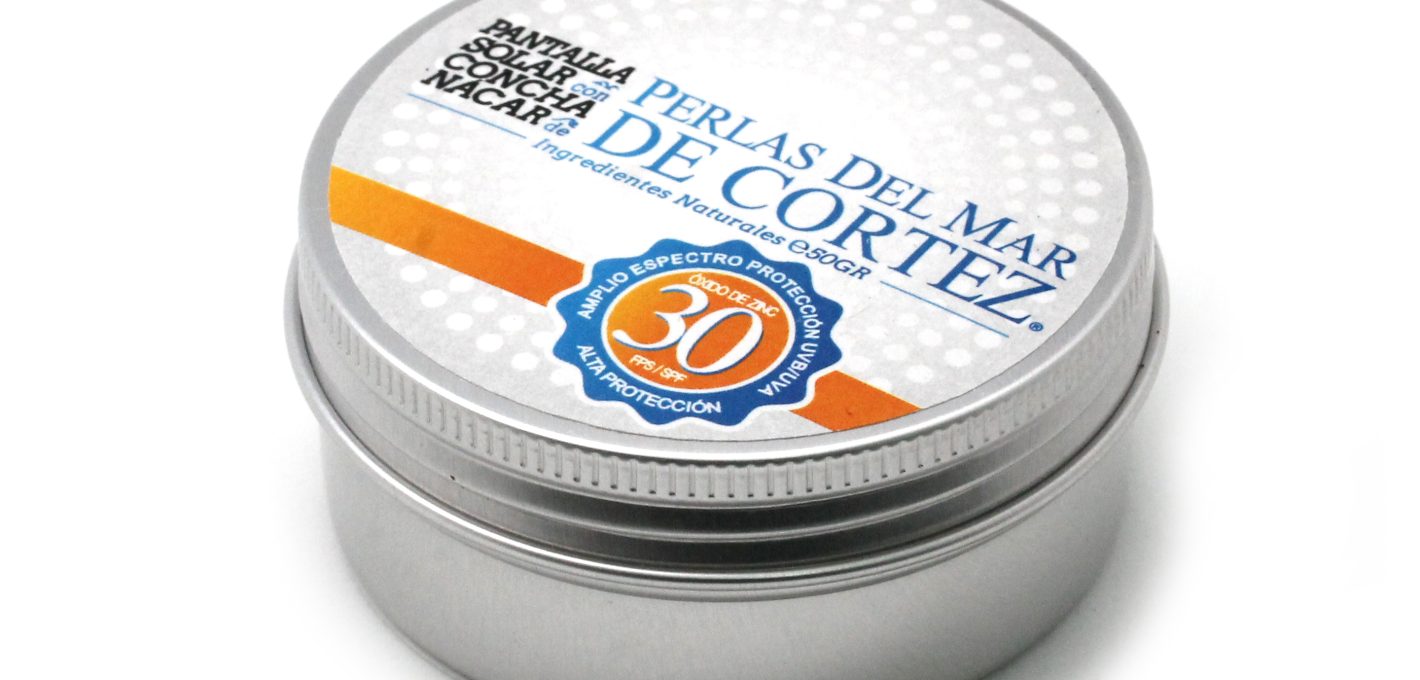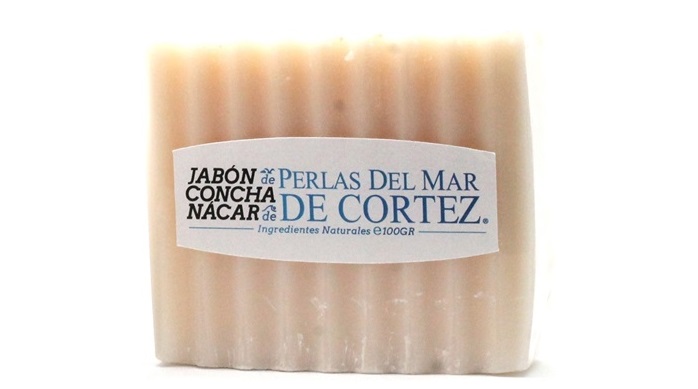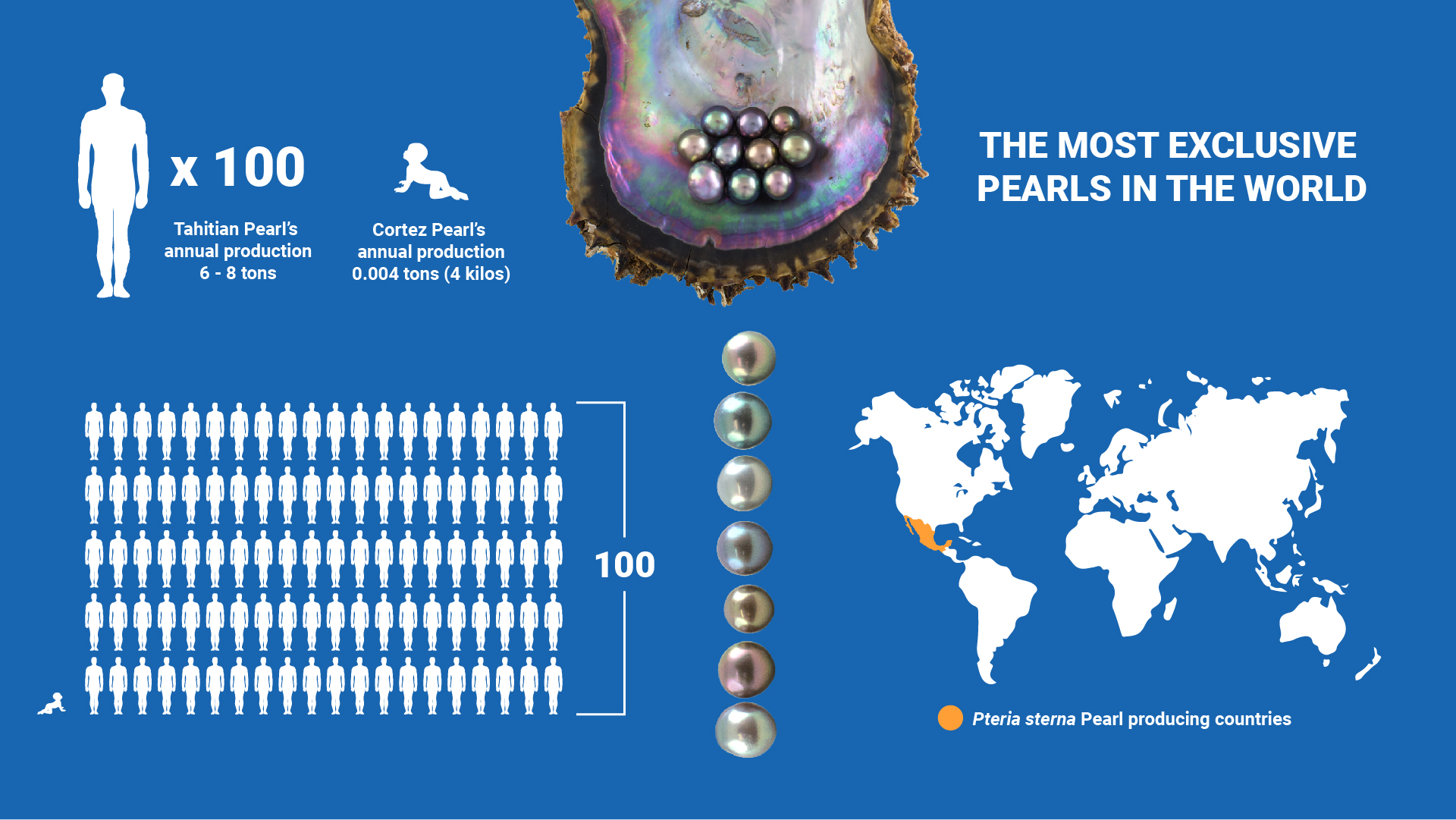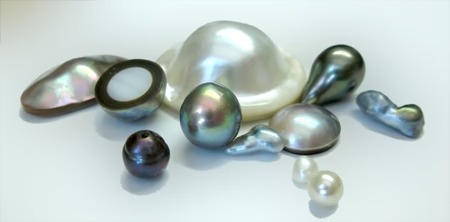
There are several kinds of cultured saltwater pearls:
- Mabe: Also known as Half-Pearls or Blister Pearls.
- Cultured: Also known as round, beaded, nucleated or loose pearls.
- Keshi: Also known as non-beaded cultured pearls.

1) Mabe or Half-Pearls:
This kind of pearl is formed when one (or more) nucleus (usually a hemispherical shaped piece of plastic or shell) is attached between the oyster’s shell and its mantle (this is the organ that secretes the mother-of-pearl shell).
The oyster’s reaction to this “intruder” is to coat it up with hundreds of nacre (the substance that makes up a pearl) layers to “protect” itself. After a culture period of 6 to 18 months the oyster is harvested and the mabe is found attached to the oyster’s shell, so they are cut from it with the help of lapidary equipment, the nucleus is removed and the remaining piece, a hollow dome of nacre, is filled with epoxy resin and a “backing” made of mother-of-pearl shell is put on the underside. Thus, a fully processed mabe is ready to set into jewelry.
Please watch the following video which now is a lot of fun because it is from so many years ago now.
Mabe are easier to obtain -when compared to loose cultured pearls- thus their price is usually lower than most cultured pearls, but they can also reach very big sizes and can make a very good fashion statement when used in conjunction with other pearl jewelry. Mabe can come in a surprising variety of unique and unusual shapes, thus making them very appropriate for jewelry designers that want to produce unique creations.


2) Loose or Cultured pearls:
These are the ones most people instantly identify with the word “Pearl”. Some experts prefer the term “loose pearl” or “cultured pearl” over the term “round pearl”, simply because many cultured pearls do not come out totally round, but in many other shapes.

Loose pearls are produced through the use of the Mise-Nishikawa grafting technique and the Arizmendi-Nava-McLaurin technique. There are three kinds of loose pearls: the bead-nucleated (marine), the tissue-nucleated (freshwater) and the keshi pearls.
Marine/saltwater pearls are always bead-nucleated (except for Keshi). This includes every single cultured pearl available today: Akoya, South Seas and Sea of Cortez, be them from China, Japan, or any other pearl producing country.
The main reason for this is that, without the use of a round shell nucleus bead, it is very difficult to obtain a fully round pearl. Even with the use of perfectly spherical beads, fully round pearls only appear in 5 to 25% of a pearl harvest. Of course, we are considering the pearl harvest as being a “good quality harvest”, and by this we mean that the pearls were allowed to grow for a minimum of 18 months (nacre thickness of at least 0.8 mm).
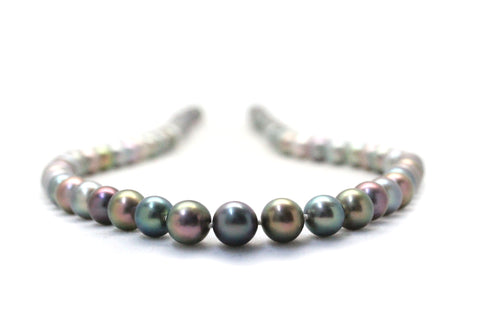
3) Keshi pearls:
The word “Keshi” in Japanese means “poppy seed”, its name makes a reference to a very small size, so the term was applied only to the smallest sizes of natural pearls. Nowadays the term is commonly used for a cultured pearl that has no nucleus.
It is produced by the oyster when we do a grafting operation, but in this case, something didn’t go as planned, and the pearl oyster got rid of the nucleus and the mantle tissue survived, so instead of coating the nucleus, the mantle coats itself or some other organic matter it finds in the sac; with this kind of irregular shaped matter guiding the shape, it is only logical that the resulting pearl is usually Baroque shaped.

The main difference between a Keshi and a (nucleated) cultured pearl is the absence of a nucleus (bead). The difference between a cultured and a natural pearl is basically the same. So, are a keshi and natural pearls the same thing? No. A keshi is a cultured pearl. Within its core you will find a sizable quantity of decaying organic matter (remains from the oyster’s gonad), whereas a natural pearl has the decaying body of an intruder (and usually it is much smaller).
Keshi come in different size, shapes and coloration, and are specially sought after by those that seek a refreshing new look in their jewelry designs.

Final Word
Summing up, there are many kinds of cultured pearls out there in the world markets…some are excellent, some are good, some could do better, so be mindful when selecting a pearl. Sometimes the price tag says it all, sometimes it does not…remember to use the distinguishing attributes of a pearl as your allies: luster, orient/overtones, nacre thickness, surface quality and color.
The CIBJO, the World Jewellry Confederation, has a new downloadable Guide for Classifying Natural Pearls and Cultured pearls, it is 62 pages long, very clear and with many pictures, Douglas McLaurin, one of the founders of this pearl farm, was one of the collaborators, we think you will love the guide.
We hope you found this resource valuable, and we thank you for your visit.




